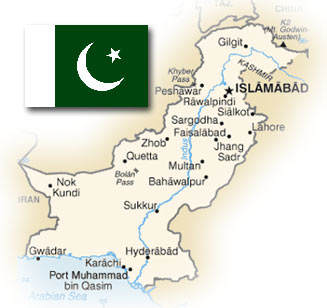Soviet-era refugee camps near Quetta are breeding grounds for Taleban
 Quetta, Oct. 13 : Refugee camps created along the Pakistan-Afghanistan border after the exit of Soviet troops from Afghanistan in 1979-80, have become breeding grounds for Taleban, reports The Times.
Quetta, Oct. 13 : Refugee camps created along the Pakistan-Afghanistan border after the exit of Soviet troops from Afghanistan in 1979-80, have become breeding grounds for Taleban, reports The Times.
A visit to Panjpiri, 60 miles northwest of Quetta, for a meeting with a madrassa teacher reveals a desire and aim to to participate in the jihad against foreign forces.
“We never had so many young people coming to join the war,” he says.
Local officials admit that there are thousands more like him in the camps in Baluchistan, which is home to about one million Afghans, mostly ethnic Pashtuns.
They say that the situation is not much different in Quetta, where Afghans now account for about 30 per cent of the population of 1.7 million, and outnumber Pakistanis in some neighourhoods.
Men wearing the Taleban’s signature black turbans walk around its bazaars and alleyways and regularly seek treatment in its hospitals, they say. Many have Pakistani passports.
Western intelligence officials have long known about this and believed that among the Afghans were Mullah Omar and other senior Taleban leaders, collectively known as the Quetta Shura.
Until recently, the United States and its allies were preoccupied with al-Qaeda figures who directly threatened the West — and they were mostly in northwestern Pakistan’s tribal areas. Now, following a surge in US troop levels in southern Afghanistan, the US is putting unprecedented pressure on Pakistan to kill or capture the Quetta Shura.
Pakistani officials say that the US has even threatened to extend CIA drone strikes — currently confined to the tribal areas — to Baluchistan.
Implicit in such threats is the allegation that Pakistan’s Inter Services Intelligence (ISI) agency, which created the Afghan Taleban, has been sheltering its leaders, either out of sympathy or for a day when foreign forces leave Afghanistan.
The reaction has been predictably furious, especially since the army has lost dozens of soldiers fighting the Pakistani Taleban this year alone.
Pakistani officials have denied that the Taleban leadership is based in Quetta, while admitting that individuals may sometimes visit in secret.
“It is not possible for entire Taleban leadership to operate from here,” General Salim Nawaz, the head of the paramilitary Frontier Corps in Baluchistan, said. “It’s a blatant lie.”
A senior ISI officer told The Times that the US had produced a list of a dozen Afghan Taleban leaders it says are in or around Quetta. He said six were dead, two were based in Afghanistan, and two visited Pakistan.
Pakistani officials do admit, however, that they have little control over some Afghan neighbourhoods in Quetta, such as Pashtunabad, Khrotabad and Kuchlak.
The writ of the state is even weaker in border towns such as Chaman. About half of its population is Afghan.
Officials estimate that madrassas there are now producing 3,000 graduates each year, most of them potential Taleban recruits. (ANI)